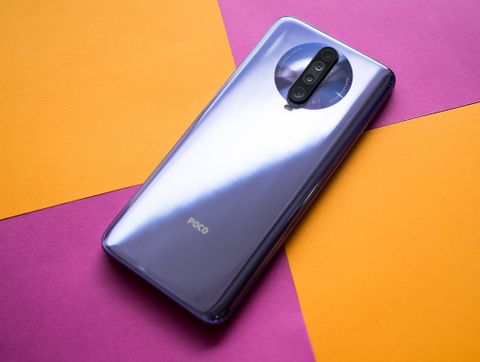Android Central Verdict
Bottom line: The POCO X2 combines a gorgeous design with robust internal hardware and outstanding battery life. The 120Hz display makes interactions more fluid, and the camera takes decent shots in most conditions. There's Android 10 out of the box, and for what it costs, you're getting excellent value.
Pros
- +
120Hz display
- +
Excellent battery life
- +
3.5mm jack
- +
Robust internals
- +
Stellar value
Cons
- -
MIUI 11 still has its issues
- -
Average camera
Why you can trust Android Central
When the POCO F1 launched back in 2018, it revolutionized the value flagship segment. The Xiaomi sub-brand not only managed to launch a phone seemingly out of nowhere, but it also met every user expectation. It's no wonder that 18 months later, the POCO F1 is still going strong.
So how does one follow up on a device like that? POCO's answer was to not launch a device at all in 2019. But it's a brand new year, and POCO has been resurrected: the brand is now a standalone entity — much like Redmi — and it has launched its first phone in 18 months. Before you get too excited, know this: the POCO X2 isn't as groundbreaking as the F1.
That's why the brand is marketing its latest phone under a brand-new series (never mind that there wasn't an X1). The POCO X2 is limited in India, and it won't make its way to other markets. That's because the phone is essentially a rebranded Redmi K30 that made its debut in China earlier this year.
But before you dismiss the POCO X2 as just another rebrand, there are a few things you need to know. Let's get started.
About this review
I'm writing this review after using the POCO X2 for just over a week in Hyderabad, India. The phone was running MIUI 11.0.3 out of the box, and was connected to Airtel's 4G network for the duration of the review.
POCO X2 Design and display
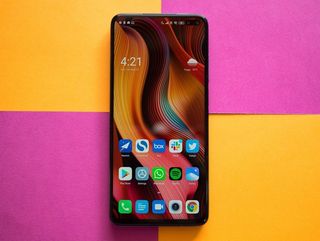
Even at a first glance, it's obvious that the POCO X2 shares the same design as the Redmi K30 series. In fact, the only difference between the two is the POCO logo at the bottom and the "Designed by POCO" moniker that's etched around the camera housing. Cover up the logos and you will not be able to tell the two phones apart. POCO says the X2 is identical to the K30 because both brands collaborated on the design front.
With the Redmi K30 rebranded to POCO X2, you'll get the POCO launcher and other software extras out of the box.
POCO and Redmi are both standalone entities now, but both brands continue to leverage Xiaomi's scale for everything from sourcing hardware to manufacturing, distribution, and after-sales service. Having two brands gives Xiaomi more freedom when it comes to targeting individual markets, and that's essentially what's going on here. Instead of launching the Redmi K30, Xiaomi is using POCO branding to make the phone stand out.
We'll have to wait and see if that strategy works out, but what you need to know is that the POCO X2 is basically a rebranded Redmi K30 aimed at the Indian market. There's no difference in the internal hardware or design, but you do get a few extra software features as the phone is running MIUI for POCO. That means you'll get the POCO launcher out of the box and additional tweaks. But more on that later.
Let's take a look at the phone itself. The defining design trait on the POCO X2 is the circular ring around the camera housing at the back, and it does a great job highlighting the cameras. The only issue I have with it is that the design would have been much more cohesive had the camera housing itself been circular — à la the Mate 30 Pro.
You won't find any gradient effects, but the vibrant color makes the phone stand out. I'm using the Matrix Purple color option, and I love the deep purple hue and the way the sides melt smoothly to meet the mid-frame. The back is unadorned aside from a POCO logo at the bottom and the aforementioned tagline, and there's also branding to highlight the 64MP camera sensor.
The POCO X2 has the perfect heft and balance, and it feels good to hold in-hand. Having said that, it is also the most slippery phone I have used to date. It took a tumble once a day on average, and it just would not stay flat on a surface. While the Gorilla Glass 5 layer at the back did a great job minimizing any damage, you will want to use a case with this phone.









Up front your attention immediately goes to the camera cutout. The X2 has dual front cameras, and POCO went with the punch-hole cutout option, just like Samsung's Galaxy S10+. The cameras are tucked away on the left side, and like the Galaxy S10+ there's a lot of wasted space, with the status icons are pushed to the right.
Another side-effect of using an LCD panel is that there's no provision for an in-display fingerprint sensor, so the X2 has a side-mounted capactivite module that's baked into the home button. The side-mounted button sits just where you rest your finger, and there's an indentation that makes it easy to locate it with your finger.
The 120Hz display is the star of the show here, but in its current state it doesn't feel as smooth as the 90Hz OnePlus 7T.
As for the display itself, the POCO X2 has a 6.67-inch LCD panel with a resolution of 2400 x 1080. The highlight here is the 120Hz refresh rate, which immediately makes a difference. Once you start using a phone with a high refresh rate, you won't be able to go back to a regular 60Hz panel. That said, the X2 had moments where there was noticeable lag, which I didn't notice on any other phone with a 90Hz or 120Hz screen.
It feels like MIUI hasn't been fully optimized to take advantage of the high refresh rate, because overall the phone doesn't feel quite as smooth as it should be. In day-to-day usage, I've found that the X2 is nowhere as fluid as the 90Hz OnePlus 7T, with the phone losing out in a side-by-side scrolling test every time.
POCO has mentioned that it is using variable refresh rate on the X2 — much like what Google did on the Pixel 4 series — to conserve power. If it detects that an app is locked to 60fps, it will automatically lower the screen refresh to 60Hz. It is possible that this is what is causing system animations to feel janky at times. Overall, it's just missing that level of immediacy that you expect from a 120Hz screen. This particular problem should be fixable with software updates, so here's to hoping that POCO is able to unlock the potential of the display.
POCO X2 Hardware
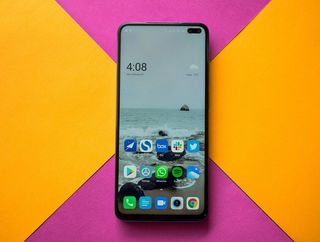
The POCO name is synonymous with value, and to that effect the brand has a lot to live up to in this area. Thankfully, you're getting a lot for the asking price.
The main talking point on the hardware side of things is that the POCO X2 is powered by the Snapdragon 730G chipset and not the Snapdragon 8xx series — as was the case on the POCO F1. There's a lot of background as to why that's the case, so let's get started. This year, Qualcomm is going all-in on 5G, with the flagship Snapdragon 865 chipset not featuring a modem at all. Device makers have to buy a 5G X55 modem in addition to the chipset, and that means they'll have to pay more.
| Specs | POCO X2 |
|---|---|
| Software | MIUI 11 based on Android 10 |
| Display | 6.67-inch (2400x1080) 120Hz LCD |
| Chipset | 2.20GHz Snapdragon 730G |
| RAM | 6GB/8GB LPDDR4X |
| Storage | 64GB/128GB/256GB UFS 2.1 |
| Rear Camera 1 | 64MP ƒ/1.9 (primary) |
| Rear Camera 2 | 8MP ƒ/2.2 (wide-angle) |
| Rear Camera 3 | 2MP ƒ/2.4 (macro) |
| Rear Camera 4 | 2MP ƒ/2.4 (portrait) |
| Front Camera 1 | 20MP ƒ/2.2 |
| Front Camera 2 | 2MP ƒ/2.4 (portrait) |
| Connectivity | Wi-Fi 802.11 ac, BT5.0, NFC |
| Battery | 4500mAh | 27W |
| Security | Side-mounted fingerprint |
| Colors | Atlantis Blue, Phoenix Red, Matrix Purple |
| Dimensions | 165.3 x 76.6 x 8.8 mm |
| Weight | 208g |
Doing so just isn't feasible for value players like POCO, and that's why you'll see more and more devices with the Snapdragon 730G, the new 720G, or the 5G-enabled Snapdragon 765 this year. The Snapdragon 865 will be limited to "true" flagships that cost over $1,000. That said, the Snapdragon 730G still has a lot to offer, and in most day-to-day scenarios you won't even notice the difference. The POCO X2 also has liquid cooling, and it does a decent job managing the thermals during gaming sessions.
POCO is launching three variants of the X2 in India: the base version comes with 6GB of RAM and 64GB of internal storage, and there's also a 6GB/128GB model and a high-end variant with 8GB of RAM and 256GB of storage. POCO is also using UFS 2.1 storage as standard on all variants of the phone, and you get a MicroSD card slot that can fit a 512GB card. I'm using the 8GB/256GB version of the X2, and in the week I used the phone I didn't see any performance slowdowns.
POCO is also correcting mistakes it made with the F1: the X2 has Widevine L1 from day one, allowing you to stream 1080p videos from Netflix and other streaming services. Features that have been a mainstay on Xiaomi phones for over five years are back, such as an IR blaster. There's also a 2x2 Wi-Fi modem, Bluetooth 5.0, NFC, Wi-Fi calling, and dual VoLTE. There's a single speaker located at the bottom, and it is strictly average. It isn't particularly suited for watching videos or playing games, and a stereo configuration would have worked much better here.
There is one area where POCO got things right, and that's battery life. With a massive 4500mAh battery under the hood, the X2 easily manages to deliver over a day's worth of use without fail. What's even more interesting is the 27W fast charging, and the fact that there's a 27W charger bundled in the box.
The 120Hz screen is inherently power hungry, and a 4500mAh battery in combination with MIUI's power-saving optimizations make a tangible difference. The 27W charger takes just over an hour to fully charge the phone from zero, and you get a 60% charge in just 30 minutes.
POCO X2 Software
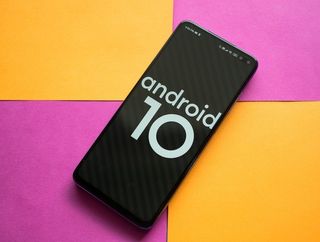
The differentiator for POCO on the software side of things is MIUI for POCO. Underneath it's running MIUI 11 based on Android 10, and the customized version of Xiaomi's user interface includes the POCO Launcher. That's a big deal because MIUI 11 still doesn't have an app drawer.
The best part about using MIUI for POCO is that there are no ads anywhere.
MIUI 11 has a system-wide dark theme, a more modern visual layout with bright accent colors, and a whole load of changes to Xiaomi's first-party apps. But the biggest change — at least for those using MIUI for POCO — is that there are no ads. It is refreshing to use MIUI without having to worry about ads showing up all over the interface, and while the X2 also has the annoying security scan feature that automatically scans new apps downloaded from the Play Store, it is easy to disable.
While MIUI 11 is polished and brings much-needed visual tweaks, the same issues that have been present in previous generations continue here as well. For starters, push notifications failed to show up on my phone, which meant that I missed several work-related messages on Slack. Same goes for Newton Mail, and I had to manually enable autostart for both services for notifications to start working again. Push notifications have been a problem on every single MIUI-based phone I've used in the last 18 months, and I just don't understand why Xiaomi doesn't address this problem once and for all.
POCO X2 Camera

The POCO X2 has four cameras at the back, with a 64MP sensor joined by an 8MP wide-angle lens, 2MP macro shooter, and a 2MP sensor for portrait shots. Up front you get a 20MP camera and a similar 2MP module for portrait mode. We've already seen Xiaomi-branded phones with a 64MP sensor in the Redmi Note 8 Pro, but the POCO X2 is using Sony's IMX686 imaging module.
In fact, the X2 is the first phone in India to feature the Sony IMX686 sensor, with POCO noting that it was able to tune the cameras better by going with Sony's module instead of the Samsung GW1 sensor. As is usually the case with high-res sensors, the 64MP module uses pixel binning to produce 16MP shots.
The camera interface itself is identical to what you see in MIUI: the shooting modes are laid out in a ribbon, and there's a toggle to switch between the wide-angle and primary lens. You'll also be able to access 2x digital zoom from here, and you get the option to toggle flash, HDR, AI mode, beautify effects, and access the macro lens via the icons laid out at the top.







As you'd imagine, the 64MP camera takes great shots in daylight scenarios. The resultant images are full of detail, accurate colors, and decent dynamic range. POCO says it tuned the cameras to deliver accurate colors and not oversaturate the output, and that works to its advantage. That said, the X2 struggles to retain detail in low-light conditions: there's just too much noise, and colors end up getting muddled. The photos you get are decent enough for sharing on social media, but the deficiencies are clearly evident when viewed on a monitor.
For what it's worth, the X2 takes great portrait shots. Edge detection is spot-on most of the times, and it managed to do a decent job taking shots of inanimate objects, an area where most phones struggle. You also get decent blur in the background, and portrait mode works particularly well for selfies thanks to the dedicated 2MP lens up front. The 2MP macro lens is decent at times, but you have to put in a lot of effort to get passable shots.
Overall, you know what you're getting with the camera on the X2. It is usable for most day-to-day scenarios, but it isn't outstanding by any measure.
POCO X2 Should you buy it?
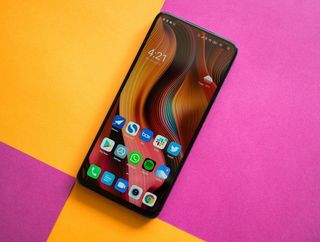
Even though the POCO X2 is a rebranded Redmi K30, it doesn't diminish the fact that you're getting a great phone here. That said, if you already have the Redmi K20 or K20 Pro, there is little reason to make the switch to the POCO X2. The phone is aimed at those using the Redmi Note 6 or older, and for those customers there's a lot to like.
The 120Hz panel has a lot of potential, the Snapdragon 730G chipset is an everyday workhorse, and you'll get at least a day's worth of use out of the 4500mAh battery. The camera is decent enough for most use cases, but you're not going to get great low-light shots. As for the software side of things, it's great to see that the X2 comes with Android 10 out of the box, and MIUI for POCO comes with features that will be well-received by the target audience.
The 6GB/64GB variant of the POCO X2 will cost ₹15,999 in India, with the 6GB/128GB available for ₹16,999. The 8GB/256GB model is retailing at ₹19,999. That's stellar pricing from POCO, and it makes the X2 immediately stand out.
At the end of the day, the POCO X2 is a great phone in its category. It may not be as revolutionary as the F1, but you're getting a phone with a gorgeous design, decent internals, and amazing battery life. The 120Hz panel is great when it actually works, but MIUI needs to be optimized to take full advantage of it. There's potential for greatness here, and if POCO fixes a few lingering issues, the X2 could be a standout option.
4 out of 5
There are other phones available for under ₹20,000 ($280) that have a similar set of features — notably the Realme X2. So why should you buy the POCO X2 over the Realme X2? In one word, pricing. The X2 is undercutting Realme, and you're getting a 120Hz panel and larger 4500mAh battery.

Great new phone, same old drawbacks.
The POCO X2 combines a gorgeous design with robust internal hardware and outstanding battery life. The 120Hz display makes interactions more fluid, and the camera takes decent shots in most conditions. There's Android 10 out of the box, and for what it costs, you're getting excellent value.

Harish Jonnalagadda is a Senior Editor overseeing Asia at Android Central. He leads the site's coverage of Chinese phone brands, contributing to reviews, features, and buying guides. He also writes about storage servers, audio products, and the semiconductor industry. Contact him on Twitter at @chunkynerd.
